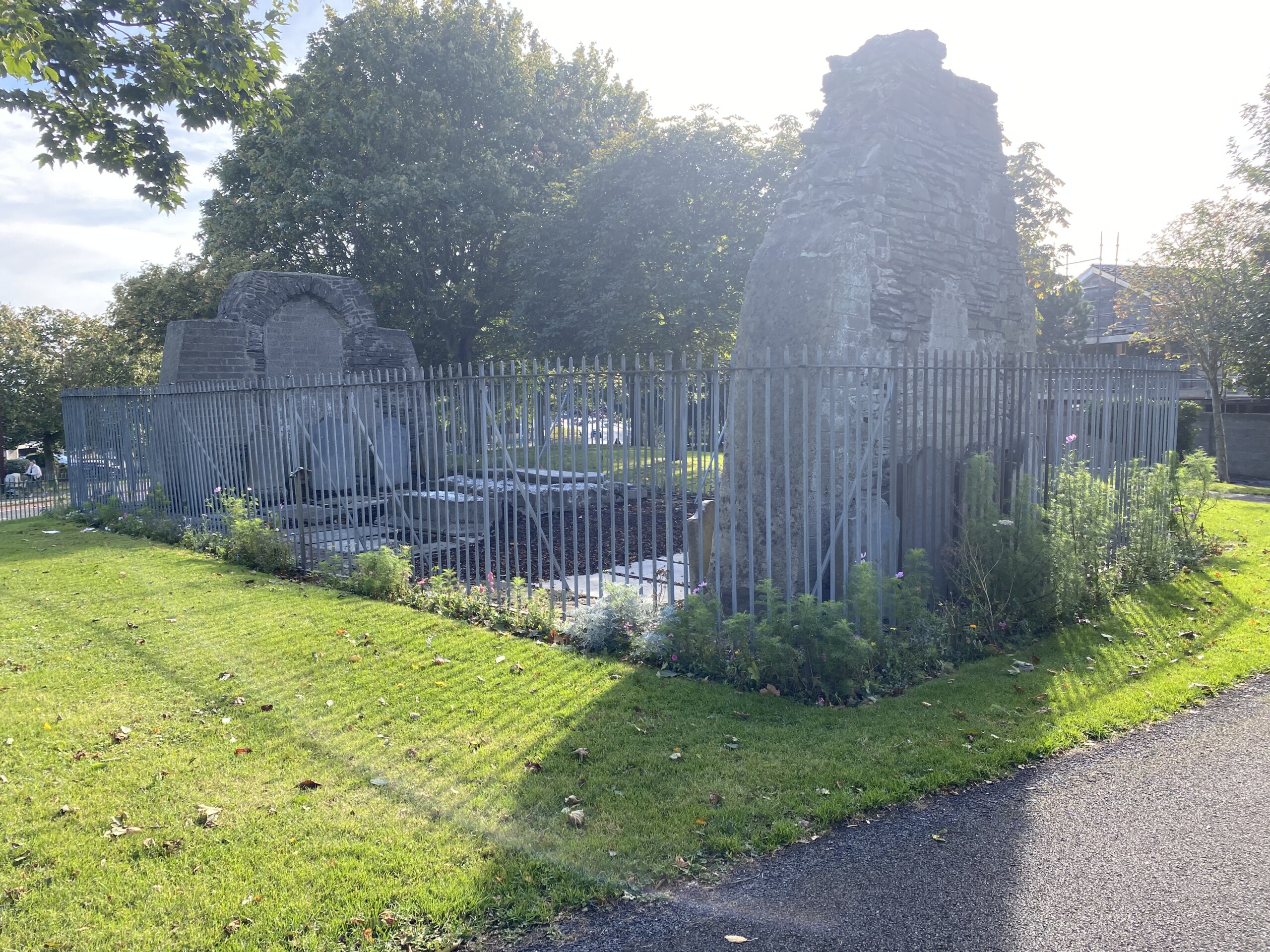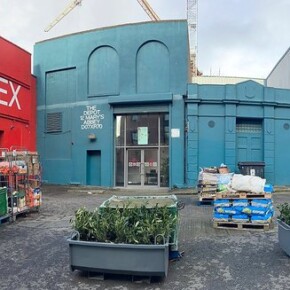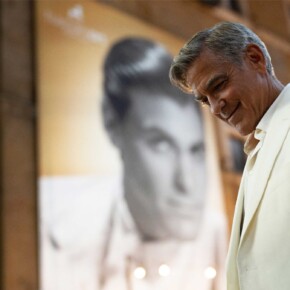Artane man clears out park, rediscovers ancient church
Gary Ibbotson 05 Nov 2021
Located on a green area between Kilmore Road and Pinebrook Rise in Artane, lies the ruins of an old church, St Nicholas’ Parish Church.
It’s so old in fact, that it is not exactly clear as to when it was built – probably sometime in the early 13th century, but the year is unknown.
According to local resident and historian Tom O’Farrell the “the date for the foundation of the church is unknown however a reference between 1181 and 1212 related to monies being paid to the mother church in Finglas.”
However, if you were to walk by the church 18 months or so ago, you would hardly realise it was there, due to the condition of the surrounding park and shrubbery.
“The whole place was overgrown with shrubbery and weeds,” O’Farrell tells the Northside People.
“There were mountains of it.”
Due to O’Farrell’s curious mind and historical interest, he began clearing out the park by himself, loading bags full of brambles, bracken, and briars.
“It was really in a state of neglect,” he says.
“I also found a number of syringes and knives.
“I know some people were afraid to walk through it at nigh time due to the state it was in,” he says.
After a while of working through the shrubbery by himself, three other local men began helping him, even filling trucks up with the overgrowth.
“We rented this truck that could take 25 tonnes of load,” says O’Farrell.
“And we filled it up to the brim.”
Roughly 18 months after O’Farrell started the project, the park and ruins and are now clear and once again are welcoming to local residents.
“Tom and the lads have an absolutely wonderful job,” says Ciara McDonnell, a local Artane resident.
“This has culminated in a much safer park for everyone.
“It has been transformed from a park we were embarrassed by to a park we are all now proud of.”
O’Farrell says that there are further plans to restore the “beautiful” flowerbeds that were once in the park and is working with local businesses to supply the required plants and equipment.
“It’s safe to walk through it now,” O’Farrell says.
“Kids want to walk through it and it’s just a nice place to be.”
However, O’Farrell’s motive for clearing the park was not exclusively based in making it a more attractive spot for local residents.
His keen interest and knowledge in local history, meant the significance of the St Nicholas Church ruins was not lost on him.
“St Nicholas Church as well as St Margaret’s and St Brigid’s churches (The Ward) were in the parish of Finglas (changed later to Coolock),” O’Farrell writes in his book, My Journey into Artane’s Past.
“The church was also listed in the ‘Crede Mihi’ as the oldest existing church in the Dublin diocese dated to 1275.
“All three churches were under the jurisdiction of the chancellor, the Archbishop of Dublin, in St Patrick’s Cathedral up to the 16th century.”
O’Farrell says the church has considerable ties to Artane Castle, which was built in the mid-14th century and pulled down in 1825.
Originally owned and developed by the fabled Hollywood family, the castle was the home to descendants of the family for decades and was used as a place of refuge for persecuted Catholics during the time of the Penal Laws.
“There is a tombstone inside the church with the Hollywood family name on it,” says O’Farrell.
“It cannot be viewed in isolation from Artane Castle and the Hollywood family.”
To celebrate O’Farrell’s efforts, Dublin City Council has decided to host an unveiling ceremony at the ruins on Friday, November 5.
The event will consist of the presentation of an information sign being placed beside the ruins, detailing their local cultural significance.
A talk by Dr Grace O’Keeffe on the history of the area, which will also take place in the nearby oratory.
“Early last year, Tom asked DCC for a sign to be put up beside the ruins and this is happening on the November 5.
“Tom is so utterly pleased that the ruins are getting the recognition they fully deserve and that the park is loved and enjoyed by all now,” says McDonnell.
O’Farrell says that he is hopeful the park will get an official name soon.
“Two years ago I asked Dublin City Council to identify the park the ruins, and it’s finally happening,” he says.











